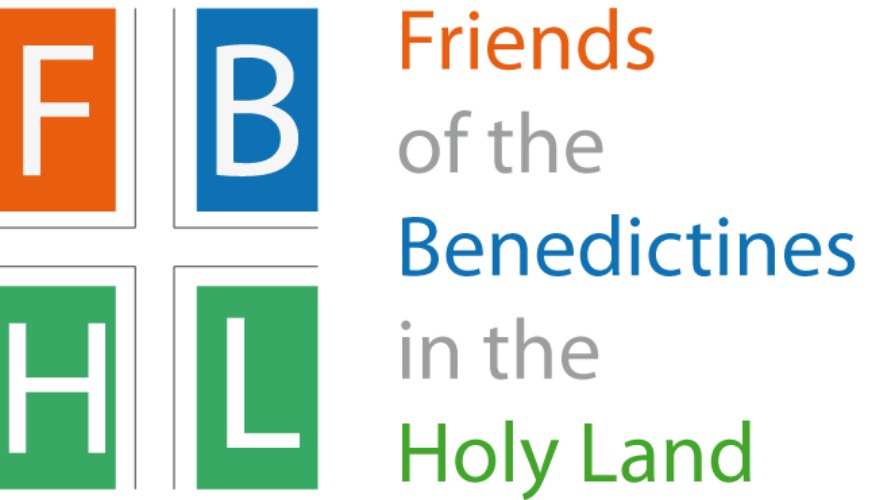The monasteries:
- Dormition Abbey, Jerusalem
Emmanuel Monastery, Benedictine Melchite Sisters, Bethlehem
Abbey of St. Mary, Abu Ghosh
Tabgha, Sea of Galilee, Galilee
Benedictine Nuns, Mount of Olives
Trappist Monastery, Latrun
St. Benedict began his own monastic life in the early 6th century creating what became known as the “Rule of St. Benedict” shortly before his death. During his life, Benedict established a dozen monasteries in and around Rome. The most important is at Monte Cassino.
The Benedictine order established itself in the Holy Land when assigned by Pope Urban II to care for soldiers and pilgrims during the crusades in collaboration with the Knights Hospitalers. That duty of hospitality is still performed in seven abbeys in Jerusalem where pilgrims are welcomed as if they were Christ. Work, prayer and reading Scripture fills the days of Benedictine monks and sisters.
Reception of pilgrims remains important to the growth and survival of the Benedictine communities. Pilgrims provide monetary support through purchases from the monastery gift shop and by renting rooms in the guest houses. While visiting the faith of the pilgrim is deepened by being in same places where our Lord and Savior and His Holy Family walked and lived. So does the location deepen the faith of the monks and sisters who live in the Holy Land.
The Benedictines are an international order with members from many countries including US, France, Germany, Congo, Canada, Italy. There are religious members from the US, France, Italy, Poland, Canada and Germany in permanent residence in the Holy Land
The Friends of the Benedictines in the Holy Land received the approval of the IRS as a nonprofit organization in 2012. It was founded by Fr. Mark Sheridan, OSB (born and raised in Washington, DC) “to provide financial support for the religious, charitable and educational activities of the canonically established monastic communities following the Rule of St. Benedict in the Holy Land including special assistance to people in need.” Monastic communities support themselves through their labor and the sale of the products they make. The Friends (FBHL) support all other activities which includes charitable work, extraordinary education of the members of the community – such as Hebrew and Arabic language classes which allow monks and sisters to communicate with their neighbors of many faiths.
Because the political situation continues to discourage pilgrims, especially from the United States, the income potential is tentative, so FBHL was formed to provide a consistent, dependable financial base. The Church in the Holy Land needs and deserves support yet little is known about the current situation of Roman Catholicism and the Orthodox Church in the Holy Land.
News from the Holy Land comes through a Jewish or a Palestinian filter in the United States. Rarely does one hear of the activity of Christians; nor is activity against Christians reported. The situation for Christians is complicated in the Holy Land: The Greek Orthodox is the largest group of Christians in the Holy Land; most are Arabic speakers. The Latin Patriarch of Jerusalem, to which the monasteries belong, is also an Arabic speaker. There are also Melkite and Syrian Catholics – the Melkites have a diocese in Haifa and in Galilee. There is a large Armenian Orthodox community in the Old City of Jerusalem including the Church of St. James.
Monks and sisters in residence have social contact with all these groups especially during important Church holidays/Holy Days like Christmas and Easter. This is why FBHL provided Arabic and Hebrew lessons for monks and sisters of Abu Gosh and even organized and supported a visit to the monks in Abu Makar in Egypt.
Board of Directors
Kathleen Mullen
President
Edward Linton, osb
Director
Philip Simo, osb
Director
Christopher C. Dolan
Director
Robin Darling Young
Director
Sidney Griffith, ST
Director
Mark Sheridan, osb
Secretary-Treasurer
websites:
http://www.dormitio.net/index.html
https://en.wikipedia.org/wiki/Abbey_of_the_Dormition
https://en.wikipedia.org/wiki/Benedictine_monastery_in_Abu_Ghosh
https://abbaye-abugosh.info/en/enter/
http://www.emmanuelmonastery.org/
https://www.bethlehemiconcentre.org/
http://catholicchurch-holyland.com/?cat=28
https://en.wikipedia.org/wiki/Bethlehem
https://whc.unesco.org/en/list/1433










